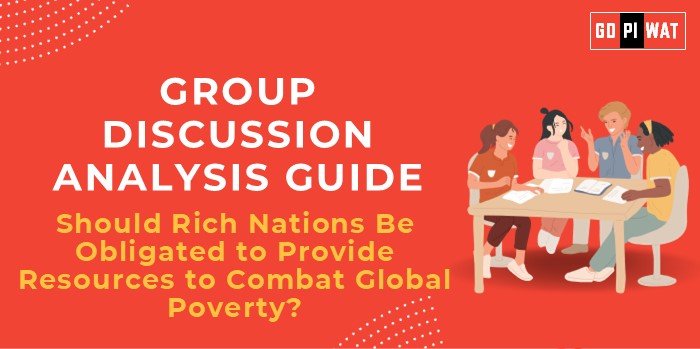📋 Group Discussion Analysis Guide
Should Rich Nations Be Obligated to Provide Resources to Combat Global Poverty?
🌐 Introduction to the Topic
Opening Context: Global poverty remains one of humanity’s most persistent challenges, with over 8.5% of the world’s population living below the international poverty line. The moral, economic, and social arguments for wealthier nations supporting impoverished regions have been debated for decades. This question has gained urgency in the face of climate change, pandemics, and global economic inequalities.
Topic Background: The United Nations’ Sustainable Development Goal 1 calls for eradicating poverty by 2030, emphasizing global cooperation. Developed nations contribute to aid through mechanisms such as Official Development Assistance (ODA), yet gaps remain in fulfilling promises like the 0.7% GDP aid commitment by the OECD countries.
📊 Quick Facts and Key Statistics
- Global Poverty Rate: 8.5% in 2023, affecting 700 million people.
- ODA Contributions: Only five countries meet the 0.7% GDP aid target (e.g., Sweden, Norway).
- Economic Inequality: The top 1% controls 45% of global wealth, showcasing disparities.
- Climate Financing: $100 billion/year pledge unmet, essential for poverty-stricken nations facing climate impacts.
👥 Stakeholders and Their Roles
- Developed Nations: Provide financial, technological, and policy support.
- Developing Nations: Implement aid effectively and transparently.
- International Organizations: Facilitate frameworks for equitable resource distribution (e.g., UNDP, IMF).
- Civil Society and NGOs: Bridge implementation gaps and amplify local voices.
🏆 Achievements and Challenges
- Achievements:
- Economic Growth: Aid investments in health and education have boosted GDP in Sub-Saharan Africa.
- Health Impact: Polio eradication in Africa through global funding and collaboration.
- Educational Advancements: Over 40 million children enrolled in school since 2000 due to aid.
- Challenges:
- Aid Dependence: Long-term reliance risks stifling local innovation.
- Accountability Issues: Corruption in recipient nations hampers effectiveness.
- Unmet Promises: Developed countries often fail to deliver pledged funds.
🌍 Global Comparisons
- Scandinavian Model: Nations like Sweden lead in aid contributions with over 1% of GDP allocated.
- China’s Investments: Infrastructure funding in Africa via the Belt and Road Initiative has seen mixed results.
Case Study: Millennium Villages in Kenya demonstrated a 30% income boost due to integrated aid programs.
📚 Structured Arguments for Discussion
- Supporting Stance: “Rich nations have a moral obligation to bridge global inequality, which ultimately fosters global stability and economic growth.”
- Opposing Stance: “Aid often perpetuates dependency and corruption, hindering sustainable development in poorer nations.”
- Balanced Perspective: “Aid must be targeted and accompanied by capacity-building to ensure sustainable, inclusive growth.”
💡 Effective Discussion Approaches
- Opening Approaches:
- Data-Driven: “700 million people still live on less than $2.15/day, emphasizing the need for collective action.”
- Ethical Angle: “If poverty is a global issue, shouldn’t the wealthiest bear greater responsibility?”
- Counter-Argument Handling:
- Aid Dependency: “Investing in skills development ensures aid leads to empowerment, not dependence.”
- Corruption: “Stronger oversight mechanisms can mitigate misuse.”
🔍 Strategic Analysis of Strengths and Weaknesses
- Strengths: Increased global stability, economic interdependence.
- Weaknesses: Funding shortfalls, ineffective allocation.
- Opportunities: Green economy investments, global partnerships.
- Threats: Geopolitical tensions, donor fatigue.
🎓 Connecting with B-School Applications
- Real-World Applications: Case studies on microfinance, CSR strategies, or international trade policies.
- Sample Interview Questions:
- “What is the role of global governance in poverty alleviation?”
- “How can aid be restructured to minimize corruption?”
- Insights for B-School Students:
- Explore sustainable financing models.
- Understand the interplay between aid and global trade policies.


